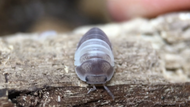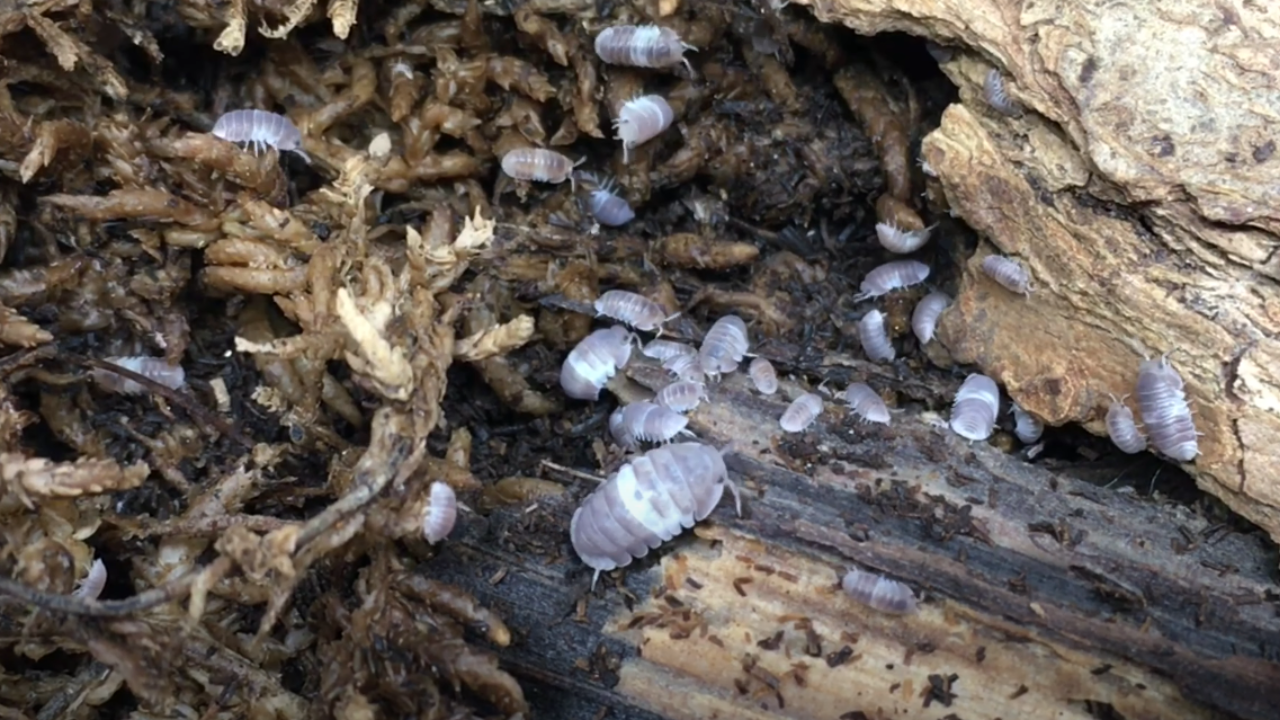Panda King Isopods: Everything You Need to Know
Posted by Sophie Hall on Apr 5th 2024
Did you know that there are 10,808 species of isopods in the world?
Isopods are an order of animals without backbones. They belong to the crustacean group of animals.
There are different species of isopods, with shapes and sizes ranging from micrometers to half meters in length.
Almost half of the known species live in the ocean, and some are on land. One such isopod species on land is the Panda King isopod.
Here, we will discuss everything you need to know about these isopods, from their biology to tips for breeding and care.
What is a Panda King Isopod?
They are a species of terrestrial crustaceans. They are known for their unique pattern and quick breeding rate. This species is far easier to breed and care for reptile pet owners looking for natural, nutritious food.
As TopFlight Dubia has done expert research on the reptilian pets. They discovered the reptilian pets love Panda King isopods, just like Dubia roaches, due to their high nutritional value.
Not only that, these isopod species benefit the terrariums and reptilian pets in various ways, such as;
- Easily available source of live, nutritious food
- Easy to digest by reptilian pets
- Clean up waste in terrariums ( small, enclosed garden)
- Avoid the need to change the substrate ( the material at the bottom of the terrarium)
What Does it Look Like?
This south asian isopod, just like other isopods, has a body divided into three parts:
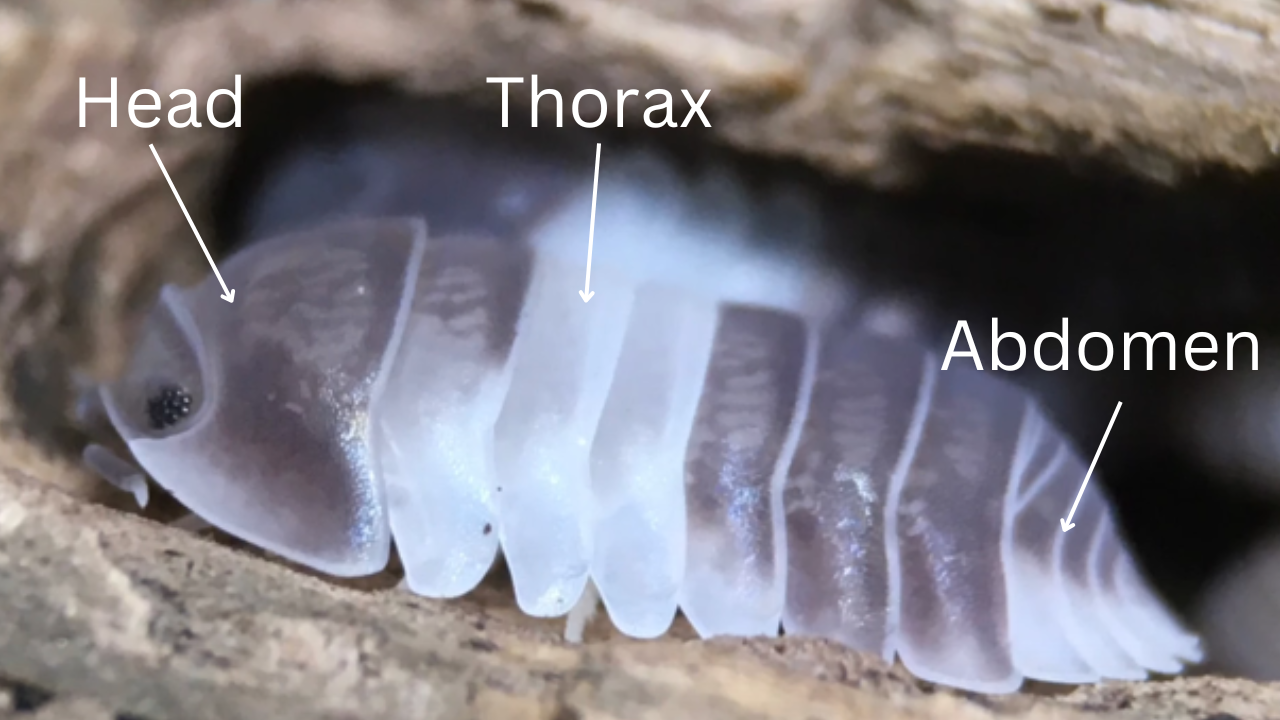
- Head (Cephalon)
- Thorax (Thorax)
- Addomen ( Pleon)
Physical characteristics of this isopod,
- Oval-shaped, dorsoventrally flattened, seven pairs of leg
- Their main body color is grey
- In the middle of their body, there is a lighter stripe or band
Where Are Panda King Isopods Found?
This species of isopod is native to the humid caves of Vietnam. These sensitive isopod species take a long time to establish themselves. However, once the specific environmental conditions are set, they tend to breed very easily.
How Long Do They Live?
These isopods generally live up to 2- 3 years in their natural habitat. They need specific conditions such as high moisture, ideal temperature, and nutritious food.
So, if you are keeping them as a pet, it is important to ensure proper habitat and maintenance.
What is the Behaviour of These Isopods?
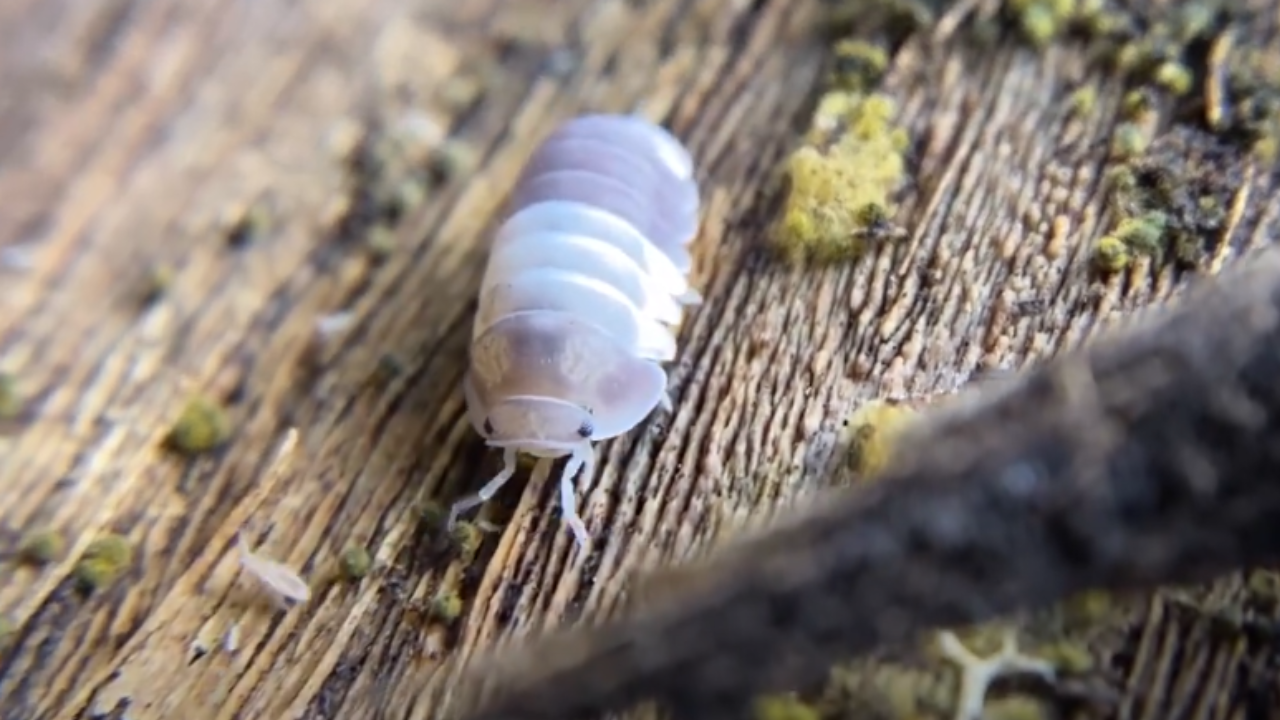
They are shy, sensitive, and social. They like to hide and burrow and can tolerate humidity changes.
Do Isopods Like Darkness?
Yes, they are adaptive to living in dark and humid environments because,
- It is their natural habitat, and the light penetration is minimal.
- They are most active at night.
- It gives them a sense of security to hide from the potential predators.
- Dark environments often have high humidity levels, which are perfect for survival.
What Do They Eat?
They are scavengers and eat a variety of food, such as;
Decaying Organic Matter
These natural cave-dwelling creatures feed on wood, leaf litter, and other organic waste.
Protein and Calcium
To support their growth and breeding, they need protein and calcium. They get these important nutrients through fish flakes, cuttlebones, eggshells, etc.
Vegetables
This species loves to eat certain vegetables, including carrots, apples, potatoes, and other leafy greens, to continue rapid breeding and maintain the health of its colony.
How Do Panda King Isopods Reproduce?
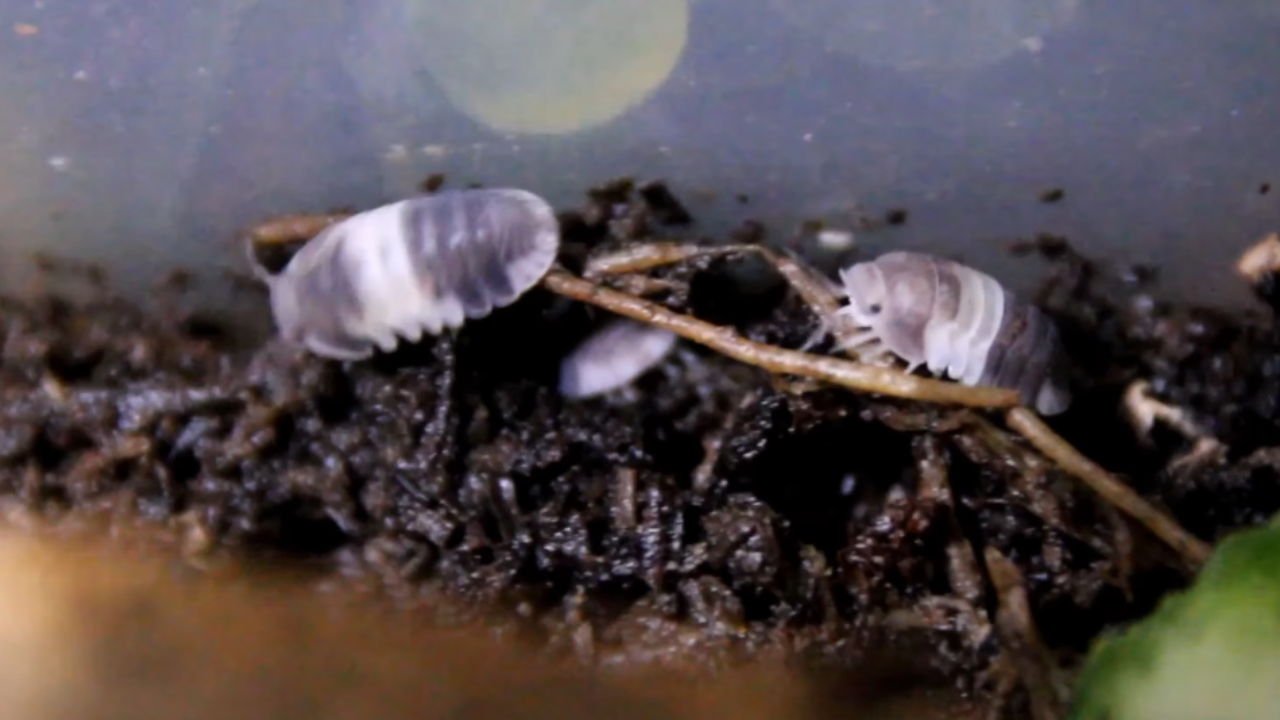
The mating process of this species of isopod is as follows;
Step 1: The male isopod attracts the female by waving its antennae and moving its body in a zig-zag pattern.
Step 2: If a female is interested, she will catch up and let the male climb on her back.
Step 3: The female lays a single stalk holding up to 20 eggs.
How To Breed and Care Panda King Isopods
They are small, easy-to-care-for creatures that can be kept in a terrarium or tank. Here, we will discuss how to set up their enclosure, choose the right substrate, and keep the environment healthy for these isopods.
Enclosure Setup
First, you will need an enclosure where you can breed the isopods. Consider a “12 by 6” container or a standard six-quart bin.
The container type depends on the number of isopods you are breeding. If you start with six, choose a container with better airflow to ensure high humidity.
NOTE: The humidity and airflow in the room where you keep your isopods will determine the required ventilation.
Substrate
The substrate is a material that provides a base for the isopods to move around, dig, and find food.
So, choose a mixture of organic materials when looking for a substrate. These isopods burrow when disturbed, so make a deeper substrate of three or more inches.
Leaf Litter
Leaf litter is the best food source for these isopods. You can bake the Oak leaves or buy them in bulk online.
Limestone or Garden Lime
To mimic their natural cave habitat, you will need limestone to mix with the substrate. Limestone is a crucial element of their diet. If you have crushed limestone, you can consider it, or you can buy garden lime online.
How To Breed Panda King in 9 Steps
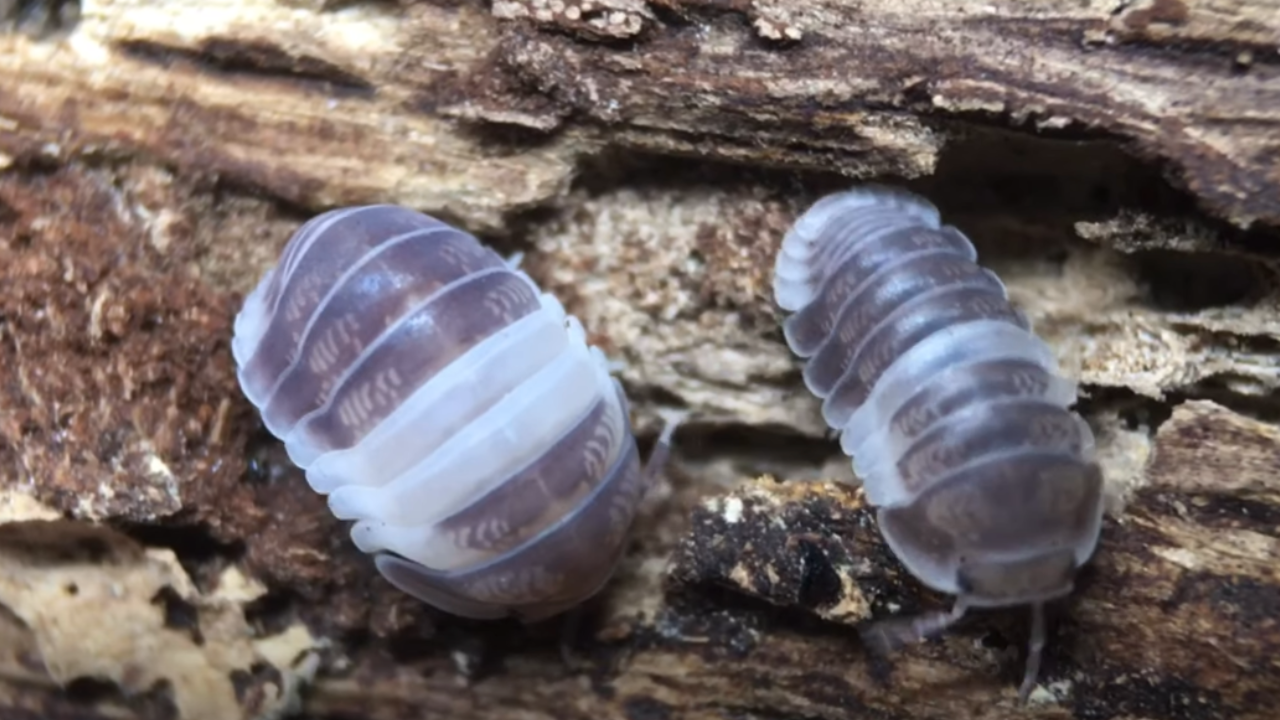
When you start breeding these isopods, you must follow a step-by-step process. Let’s dive into the steps;
- Create a custom substrate mix using the Coco Coir, Crushed Oak Leaves, and Sphagnum moss.
- Set substrate depth (atleast 3 or 4 inches).
- Add magnolia leaves on top of the substrate.
- Add pieces of cork bark and dried oak leaves to the top of the Magnolia leaves.
- Add an extra Sphagnum moss on one end of the bin.
- Spray the area heavily with water for 3 Days, but do not wet the entire substrate.
- Put a piece of cuttlebone and calcium powder in one corner of the habitat.
- To ensure ventilation, drill 5 or 6 small holes on either side of the bin and cover them with tape to maintain humidity.
- Be patient. These isopods burrow a lot, and it may take several months to breed and become visible.
Other Caring Tips
- Remember that you must upgrade or split the colony due to its quick, large-scale reproduction.
- Most Cubaris prefer good ventilation and a substrate that is slightly moist, though never soggy.
- Keep the dry side as small as possible to provide a moisture gradient for these isopods.
- These isopods are cold-sensitive creatures, so do not allow them to get more exposure to cold.
- This species seems normal at normal room temperature. However, on winter nights, keep the temperature around 65 Fahrenheit or 18.3 Celsius.
- Provide them with lots of hides, like bark and rotting wood.
- Give them bits of vegetable items such as squash, sweet potatoes, green beans, and fish food pellets occasionally.
Conclusion
Panda King isopods are incredible creatures known for their unique patterns and fast reproductive rate.
Most reptilian pet owners choose these species to start a colony because of their ease of breeding and care benefits.

